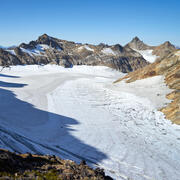Water
The Alaska Science Center conducts research and monitoring on a wide variety of hydrological issues affecting streams, rivers, lakes, groundwater, and glaciers in Alaska. We provide valuable and up-to-date information for water resource planners, engineers, managers, and the public to protect life and property, design and monitor infrastructure, and manage aquatic resources.















